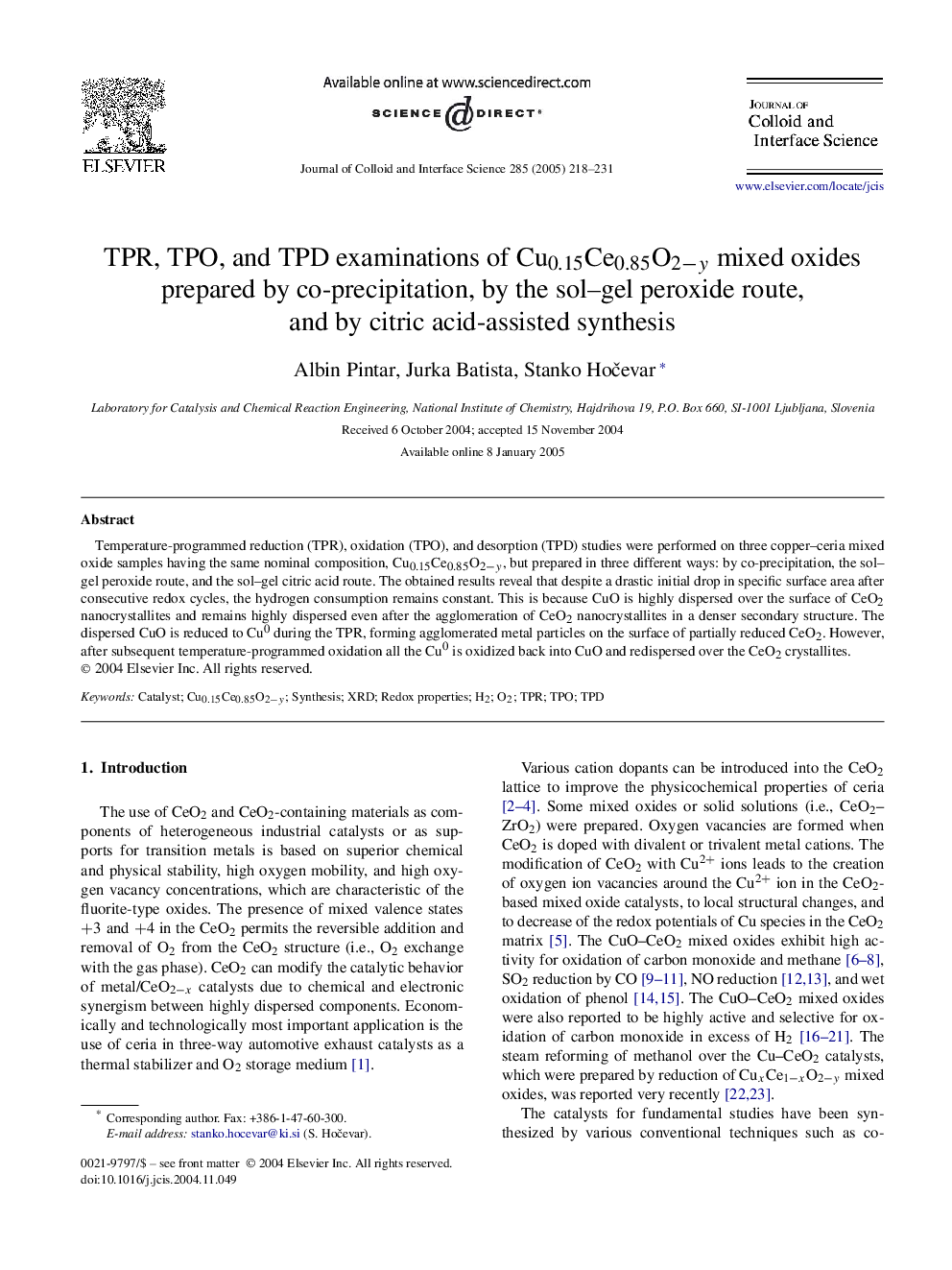| Article ID | Journal | Published Year | Pages | File Type |
|---|---|---|---|---|
| 10378080 | Journal of Colloid and Interface Science | 2005 | 14 Pages |
Abstract
Temperature-programmed reduction (TPR), oxidation (TPO), and desorption (TPD) studies were performed on three copper-ceria mixed oxide samples having the same nominal composition, Cu0.15Ce0.85O2ây, but prepared in three different ways: by co-precipitation, the sol-gel peroxide route, and the sol-gel citric acid route. The obtained results reveal that despite a drastic initial drop in specific surface area after consecutive redox cycles, the hydrogen consumption remains constant. This is because CuO is highly dispersed over the surface of CeO2 nanocrystallites and remains highly dispersed even after the agglomeration of CeO2 nanocrystallites in a denser secondary structure. The dispersed CuO is reduced to Cu0 during the TPR, forming agglomerated metal particles on the surface of partially reduced CeO2. However, after subsequent temperature-programmed oxidation all the Cu0 is oxidized back into CuO and redispersed over the CeO2 crystallites.
Related Topics
Physical Sciences and Engineering
Chemical Engineering
Colloid and Surface Chemistry
Authors
Albin Pintar, Jurka Batista, Stanko HoÄevar,
